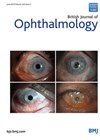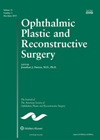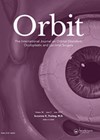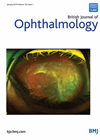
Journal Reviews
Paraneoplastic optic neuropathy features
This is a retrospective review of seven patients diagnosed with paraneoplastic optic neuropathy (PON) between January 2015 and June 2017. Five patients had a history of primary malignancy, including papillary thyroid carcinoma, type B thymoma, testicular seminoma and lung carcinoma....
Thyroid eye disease and obstructive sleep apnoea
This is a retrospective study looking for an association between compressive optic neuropathy in thyroid eye disease (TED-CON) and obstructive sleep apnoea (OSA). One hundred and nine patients with thyroid eye disease were asked to complete a validated questionnaire designed...
Cavernous sinus thrombosis and orbital cellulitis
This is a report of six cases of combined orbital cellulitis and infective cavernous sinus thrombosis, with a literature review. The average age was 39 years, four were male and two were intravenous drug users. All had sinusitis, usually involving...
Biopsy of nasolacrimal duct using sheath guided dacryoendoscopy
In this study the author’s biopsied six eyes of five individuals with recurrent nasolacrimal duct obstruction following a prior dacryoendoscopic probing. All procedures were performed under local anaesthetic, the obstruction or lesion was directly visualised with dacryoendoscope and biopsy was...
Surgical correction of involutional lower lid entropion
This is a retrospective comparative study. The authors analyse results of 281 eyelids with involutional entropion operated by two surgeons, 89 treated with buried resorbable imbricating sutures and 192 with non-buried non-resorbable sutures. The horizontal lid laxity was corrected by...
Improving reading of fundus photographs in an emergency setting
The first phases of the FOTO-ED study found that emergency providers perform significantly better with fundus photography than with direct ophthalmoscopy in the detection of fundus abnormalities. The authors hypothesised that by providing additional training to emergency providers, this would...
A case report showing the natural history of papilloedema
The case report describes a 54-year-old woman who developed increased intracranial hypertension due to chronic dural venous sinus thrombosis in the absence of any significant comorbidity. In the years preceding diagnosis, the patient underwent routine diabetic retinopathy screening; however, gradual...
Features of Behcet’s disease
This is a retrospective single centre study from Paris, France, between the periods of 1986 to 2015. Twenty-nine out of 217 (13.3%) neuro-Behcet’s disease (NBD) patients presented with neuro-ophthalmic manifestations (55% of men and mean age of 28 years). Sixteen...
Prediction of visual outcome in IIH
In this prospective study, visual outcome of 40 patients with idiopathic intracranial hypertension (IIH) was compared with clinical and neuro-ophthalmic parameters. The purpose of this was to determine any correlation to try and predict visual outcome for IIH patients. Parameters...
Is exenteration helpful in invasive fungal sinusitis?
Invasive fungal sinusitis is a potentially lethal disease that causes painful orbital apex syndrome with ophthalmoplegia and visual loss. The mechanism of ophthalmoplegia and visual loss is not clear, and neither is the role of radical surgery-orbital exenteration. The authors...
Two illustrative cases of AZOOR
The authors present two illustrative cases of acute zonal occult outer retinopathy (AZOOR) which causes acute idiopathic blind spot enlargement. The disease is characterised by sudden loss of outer retinal function associated with photopsia, with minimal or no fundoscopic changes...
Differences in elastometry of cornea and optic nerve head in both eyes of patients with NAION
Non-arteritic anterior ischaemic optic neuropathy (NAION) is an important cause of visual loss in the middle aged and elderly population. This prospective cross-sectional study investigates the biomechanical properties of optic nerve head (ONH) and cornea in both eyes of patients...









